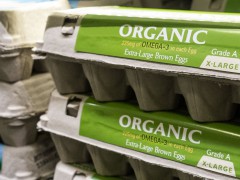Proponents of GMO labeling laws, such as Washington State’s Initiative 522, are touting a new study finding that mandatory labeling will have no effect on retail food prices. The study, which was commissioned by the advocacy group Just Label It, undoubtedly is intended to counter claims by labeling opponents that mandatory GMO labeling will result in higher prices. However, the study overlooks key consequences of labeling laws that are likely to drive up costs for food manufacturers, wholesalers, retailers and – at least to some degree – consumers.
The study’s author, corporate sustainability consultant Kai Robertson, looked at research on the factors influencing supermarket prices, as well as literature on the impact of food label changes on retail prices and drew two conclusions. First, that demand-related factors – such as consumer demographics and competitors’ pricing behavior – affect the prices set by grocery stores more than wholesale costs. The unstated implication of this is that, even if a labeling law increases wholesale costs, retailers might not pass those costs on to their customers. That could be true, but it defies common sense to think that grocers – which typically operate on slim margins – won’t pass on at least some of their increased costs to consumers. Moreover, the study says nothing about how retail prices will be affected by retailers’ increased compliance costs, such as increased recordkeeping costs.

“Welcome back, Doctor. We missed you.”
Second, Robertson reports that there are no existing studies on the link between product labeling changes and prices charged to consumers. From this, she concludes, “this study finds no evidence that changes to a food processor’s product labels affect the prices paid by shoppers.” Again, that may be true, but a lack of “evidence” when no studies have been done tells us nothing about what those studies would find, if they were done. More importantly, though, the cost of labeling changes is not the factor likely to drive price increases, although the costs of having to use special labels just for products sold in Washington could be substantial (a point Robertson does not address).
To put it as simply as possible, we are systemically incapable of making GMO labeling an inexpensive proposition. It is not possible to avoid GMOs without increasing costs, given our existing food distribution infrastructure. The most significant costs of mandatory GMO labeling likely will result not from manufacturers having to add “genetically engineered” to their product labels, but rather, from the steps that food businesses will have to take to avoid the label. Obviously, producers would rather not brand their products as containing something consumers view negatively. Yet, even if a product contains trace amounts of GMO material, and even if GMOs are not intentionally added to the product, Washington’s Initiative 522 would require the product to be labeled as “partially produced with genetic engineering” or “may be partially produced with genetic engineering.” To avoid using those labels, food manufacturers will have to implement measures to ensure that non-GMO and GMO ingredients are not commingled and do quality control testing to confirm that GMO materials are not present. Furthermore, everyone in the supply chain from farmer to retailer will have to obtain affidavits from their suppliers stating that the ingredients were not intentionally produced with genetic engineering and were segregated from GMOs. A study relied on by the “No on 37” campaign – the industry group that lobbied against California’s Prop 37 – estimated that such increased operational and recordkeeping costs would add $400 per year to the average California family’s grocery bills. Even if that number is inflated, the cost is not realistically zero. Robertson’s study does not consider these costs.

















